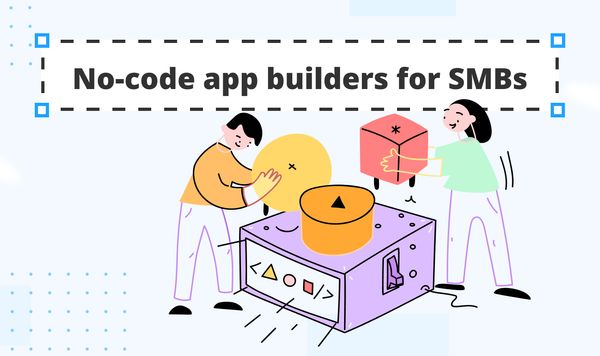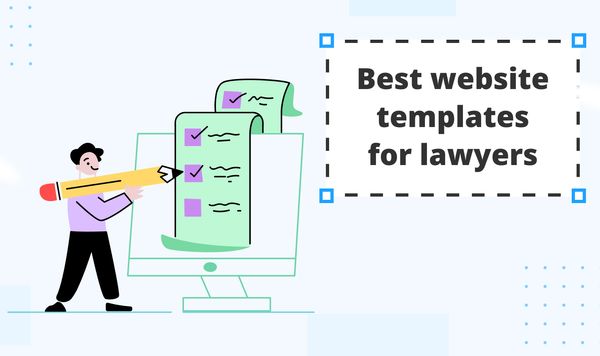8 principles of gamification to make your app more engaging
Have you ever found yourself engrossed in a mobile game, relentlessly tapping away to beat your high score or advance to the next level? A high-quality game will hook you up to your screen for at least a good couple of hours. A similar impact on users can be achieved in non-gaming apps if you add gamification features to your project.
Gamification incorporates features like points, badges, and leaderboards into non-game applications to make them more interesting for users and addictive. It's a potent strategy to enhance user engagement, motivation, and loyalty in mobile apps.
However, merely adding a few points and badges isn’t sufficient. To create a truly compelling gamified mobile app, learn the 8 core principles of gamification.
The 8 core principles
1. Clear goals and challenges
Any engaging game has a clear understanding of what players should aim to achieve. The same applies to gamified mobile apps. Users need a roadmap: well-defined goals and challenges that direct their progress within the app. This roadmap should clarify what the user is working towards.
Examples:
- Points: award points for completing tasks within the app, giving users a measurable sense of progress.
- Levels: a level system provides a clear path for advancement, motivating users to keep progressing.
- Badges: earning badges for reaching specific milestones adds recognition and a sense of accomplishment.
2. Integration with core functionality
Gamification should enhance, not overshadow, the core purpose of your mobile app. It’s important to seamlessly integrate gamification elements with the app’s core functionalities. Otherwise, you risk creating a fun little game that won’t halp you achieve any of your business goals.
Examples:
- Rewarding core tasks: Motivate users by awarding points, badges, or progress towards levels for completing essential tasks within the app, reinforcing the value of core functionalities.
- Gamification as a guide: Use gamification elements to guide users through the app’s functionalities. Frame tutorials or challenges in a game-like manner, making the learning process more engaging.
- Focus on user value: Remember, gamification is a tool, not the ultimate goal. Always prioritize core functionalities that provide genuine value to users, with gamification elements complementing and enhancing this value.
3. Engaging growth system
Similar to the satisfying feeling of achievement in a video game, a well-crafted progression system is vital for keeping users hooked on your app. The key idea is to motivate users by offering a clear sense of progress and achievement as they use the app, tingling their dopamine receptors and fueling their desire to return.
Examples:
- Level systems: Break down the app’s goals into achievable levels, offering mini-victories to motivate users.
- Progress bars: Visually show a user’s progress towards a goal. Watching a progress bar fill up creates anticipation and satisfaction.
- Unlocking new features: Reward users with access to new features as they advance, keeping the experience fresh and engaging.
4. Meaningful prizes
Imagine overcoming a tough level in a game only to receive a useless trophy. Disappointing, isn’t it? The same goes for gamified apps. An effective reward system offers meaningful rewards that are valuable and align with the app’s overall goals. These rewards should motivate users to keep progressing and contribute to the app's success.
Examples:
- Virtual goods: In some apps, virtual goods that enhance the user experience, like customization options or power-ups, can be motivating.
- Discounts & exclusive content: For apps focused on real-world benefits, offering exclusive discounts or access to premium content can be highly rewarding.
- Alignment with goals: Ensure rewards contribute directly to the app’s objectives. For example, a language learning app might reward users with virtual badges for completing lessons, motivating them to continue learning.
5. Positive reinforcement
Building on the concept of rewards, a gamified app thrives on constant positive reinforcement and feedback. The aim is to celebrate user achievements, big or small, to keep them motivated and engaged.
Examples:
- Encouraging messages: Welcome users with personalized messages acknowledging their progress or completed tasks.
- Animations & sound effects: Celebrate milestones with exciting animations and sound effects to create a sense of achievement.
- Public pecognition: Consider leaderboards or recognition systems to acknowledge top performers, fostering a healthy sense of competition.
6. Building a community
Humans are social beings, and gamified apps can leverage this desire for connection to build a thriving community. Fostering a sense of community can significantly boost user engagement and loyalty.
Examples:
- Leaderboards & challenges: Use leaderboards to showcase top performers and create a healthy sense of competition.
- Teams & collaboration: Allow users to form teams or collaborate on tasks, fostering camaraderie and shared achievement.
- Social Ffeatures: Integrate social features like chat rooms or forums where users can interact, share experiences, and motivate each other.
7. Balanced difficulty & challenge
The sweet spot of any game is achieving a balance between difficulty and challenge. The same principle applies to gamified apps. Activities should be challenging enough to keep users engaged but not so difficult that they become discouraged.
Examples:
- Adjustable difficulty settings: Let users adjust the difficulty level to suit their skills and preferences, catering to a wider audience.
- Tutorials & practice modes: Offer introductory tutorials and practice modes to equip users with the necessary skills to tackle challenges.
- Gradual progression: Design the app’s challenges with a gradual increase in difficulty, allowing users to build their skills progressively.
8. Variety & unlockable features
Even the most engaging game can become monotonous without variety. To keep users engaged long-term, you need to offer a variety of experiences and continually introduce new content.
Examples:
- New levels & games: Regularly introduce new levels, mini-games, or challenges to provide fresh experiences.
- Unlockable features: Reward users with access to exciting new features as they progress, from new customization options to entirely new functionalities.
- Seasonal events & themed updates: Introduce limited-time events or themed updates that offer unique challenges and rewards, encouraging users to return to see what’s new.
Gamification process in a nutshell
Essentially, the gamification process for any mobile app will have its own distinct characteristics and principles. Generally, this involves extensive discussions, brainstorming sessions, and, to be frank, a dedicated team to steer the project.
Another way to do it is to use apps like InAppStory that offer a gamified sandbox for our clients to explore and create their own unique games within their mobile apps. It requires minimal effort, doesn't consume much time, and best of all, anyone can create whatever they envision. Combine this with building an app using a no-code solution and a smooth customer support service — and you’ve replaced at least three expensive teams of developers with smart and simple apps.
Key takeaways on adding gamification features to your app
By adhering to these eight core principles you can transform your mobile app into a captivating and engaging experience that drives user motivation, retention, and overall success.
Gamification is a powerful tool, but its effectiveness highly depends on a deep understanding of user psychology and seamlessly integrating game mechanics with your app’s core functionalities. Think it through, apply correctly in accordance with your business goals, and you will see that gamifications is… well, a game-changer!


